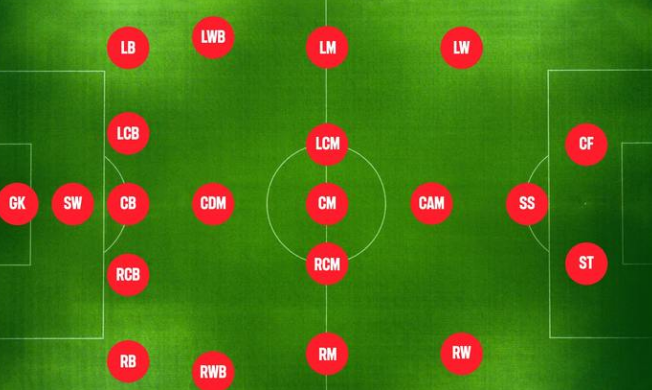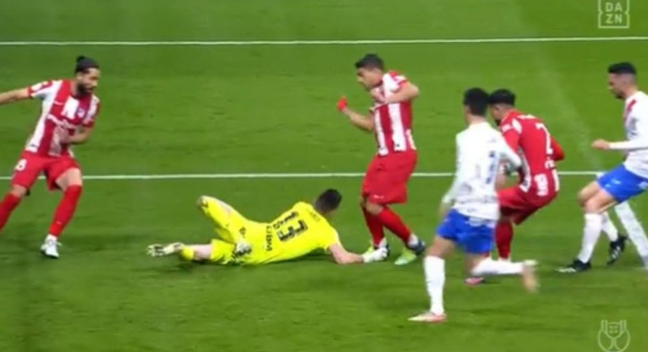
Winger vs Inside Forward: What’s the Difference and Which One Wins Games?
June 20, 2025 2:30 pm Leave your thoughtsIn football, the nuances of player roles can significantly impact team performance. Two of the most debated and often misunderstood roles are those of the winger and the inside forward. Both roles occupy similar areas on the pitch but function in markedly different ways. Understanding their differences and how each contributes to winning games is crucial for coaches, players, and fans alike.
Understanding Soccer Positions: The Traditional Winger
Traditionally, a winger operates wide on the flanks, stretching the opposition’s defensive line. Wingers are known for their speed, dribbling skills, and precise crossing ability. Their primary function is to deliver accurate crosses into the box, setting up goal-scoring opportunities for the strikers. Classic examples include legends like Ryan Giggs and David Beckham, who dominated soccer positions on the flanks with pace, technique, and pinpoint crossing.
Wingers usually maintain a wider position, hugging the touchline. This tactical choice forces the opposing full-backs to spread wide, creating gaps in central defense. A winger’s effectiveness is measured by their ability to consistently beat defenders one-on-one and deliver quality balls into dangerous areas.
Key Attributes of a Traditional Winger:
- Exceptional pace
- Strong dribbling ability
- Crossing accuracy
- Good stamina to cover vast distances
- Ability to beat defenders one-on-one
The Rise of the Inside Forward

In contrast, the inside forward is a relatively modern soccer position, revolutionized by tactical innovators like Pep Guardiola. Unlike wingers, inside forwards operate closer to the goal, cutting inside rather than staying out wide. They frequently look to shoot or create scoring opportunities with quick combinations around the penalty area.
Players like Mohamed Salah and Cristiano Ronaldo epitomize the inside forward role. Their positioning and movement are designed to create scoring chances through direct goal threats. Inside forwards are typically strong on their opposite foot, right-footed players operating on the left flank, and vice versa. This inverted approach allows them to cut inside onto their stronger foot and unleash accurate shots on goal.
Key Attributes of an Inside Forward:
- Clinical finishing ability
- Exceptional ball control in tight spaces
- Creativity in the final third
- Strong shooting ability
- Ability to link play with central midfielders and strikers
Tactical Differences Between Wingers and Inside Forwards
The tactical setup of a team can significantly determine whether a winger or an inside forward is more appropriate. Teams utilizing wingers typically employ formations like the 4-4-2 or 4-2-3-1, emphasizing width and crosses into the box. This setup demands players who excel at delivering the ball accurately from wide areas, aiming to create aerial chances or tap-ins for strikers.
Conversely, teams favoring inside forwards often adopt formations such as the 4-3-3 or 3-4-3, designed for fluid, attacking play. These setups emphasize quick interchanges, dynamic runs, and intricate passes in and around the box. The inside forwards become goal-scoring threats themselves, not just providers.
Impact on Game Dynamics
When deciding between deploying wingers or inside forwards, coaches must consider their game plan, the opposition, and available player talent. Wingers excel in matches where exploiting wide spaces is advantageous, especially against teams playing narrow formations or high defensive lines. Their crosses and wide play can stretch defenses, creating significant openings for teammates.
Inside forwards, however, thrive against defensively organized teams that sit deeper. Their ability to weave through tight spaces, take defenders on in one-on-one scenarios, and shoot accurately from distance becomes invaluable in breaking down stubborn defenses. They provide a direct threat, forcing opponents to constantly shift and adapt defensively.
Goals and Assists: Which Role Contributes More?
When it comes to statistical output, the inside forward generally scores more goals due to their proximity and directness towards goal. Players like Mohamed Salah routinely achieve high goal tallies, often rivaling traditional strikers. Conversely, traditional wingers tend to record higher assist numbers, given their role as creators rather than primary goal scorers.
Yet, statistics alone don’t capture the full story. A winger’s value often lies in their indirect contributions, such as forcing defenders into mistakes or creating space through their movement, which might not always reflect in goal or assist tallies.
Player Development and Flexibility
Modern football demands versatile players who can adapt to multiple roles. Many successful teams feature players capable of operating as both traditional wingers and inside forwards, depending on match context. Young players often start as wingers due to the fundamental skills of pace and dribbling they learn, later transitioning to inside forward roles as they develop enhanced goal-scoring instincts and tactical awareness.
Which One Wins Games?
The critical question of whether wingers or inside forwards are more effective depends significantly on tactical alignment, opponent strategies, and individual player qualities. Teams that consistently dominate possession and face deep defensive blocks typically benefit from inside forwards, whose directness and shooting prowess can unlock tight defenses. Teams that rely on quick counterattacks and aerial dominance often thrive using traditional wingers.
Teams successful at the highest level frequently use a hybrid approach, blending the strengths of both roles. Modern football strategy increasingly sees flexible wide players who can switch between winger and inside forward duties seamlessly within a single match, adjusting dynamically to evolving game situations.
Examples of Successful Usage in Top Teams
Liverpool, under Jürgen Klopp, famously utilizes inside forwards Salah and Sadio Mané, capitalizing on their goal-scoring prowess to devastating effect. Their strategy emphasizes pressing high, regaining possession quickly, and exploiting rapid transitions through quick, incisive attacking play.
Manchester City, coached by Pep Guardiola, employs wide players who fluidly shift between winger and inside forward roles. Players like Raheem Sterling and Riyad Mahrez have thrived by alternating between staying wide to stretch play and cutting inside to create scoring opportunities, demonstrating versatility and strategic flexibility.
On the other hand, teams like Atletico Madrid, under Diego Simeone, traditionally favored wide wingers in a disciplined, counter-attacking system. The wide players maintain positional discipline, deliver crosses effectively, and support their defensive responsibilities, exemplifying the tactical effectiveness of traditional wingers.
Understanding these intricate differences between soccer positions, such as wingers and inside forwards, provides deeper insight into tactical strategies that win matches. Whether coaches deploy traditional wingers or adopt modern inside forwards can significantly influence the outcome of games, highlighting the evolving nature of soccer tactics and player roles.
Categorised in: Premier League Blog, The Football Forum Blog
This post was written by Powered by thefootballforum.net
